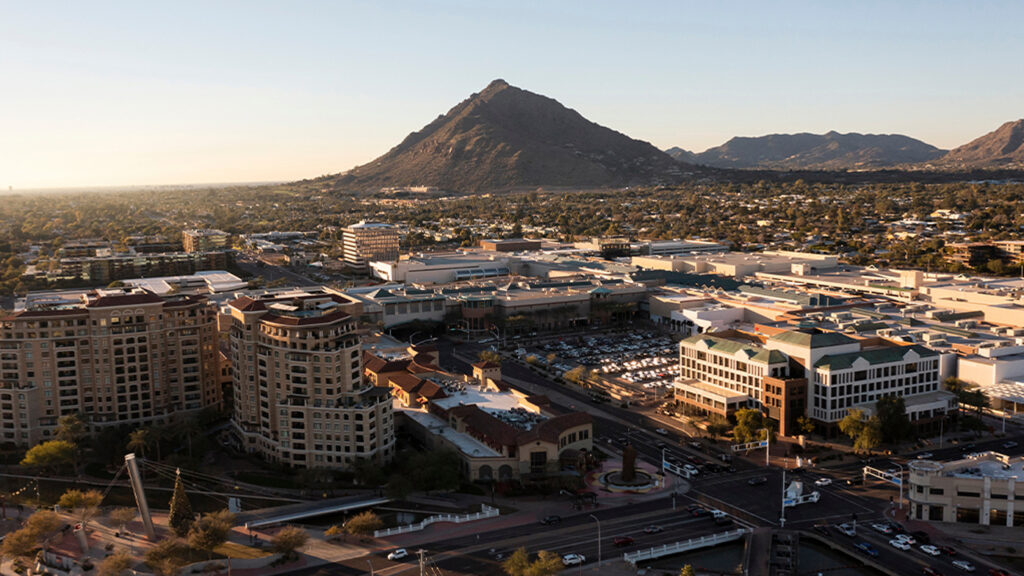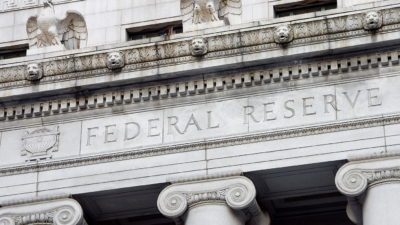GlobeSt hosted its inaugural industrial conference in Scottsdale, AZ December 8-9, 2022. Below are some observations from the conference.
- The U.S. will experience a modest recession in 2023, with moderate growth expected to return by Q4 2023. However, retail sales remain a positive driver to provide some insulation during the downturn as e-commerce, as a percentage of total retail sales, is expected to reach 32% by 2032. The U.S. industrial market will enter this upcoming modest recession in a much better position than it did during the financial crisis in 2008 as industrial vacancy was much higher at the start of 2008 than it is today. Current low vacancy rates will act as an insulator as we approach any type of economic recession.
- Using the just-in-case strategy, inventory control is beginning to backpedal to fewer days in the warehouse, which could be impacting industrial demand. As a result, the just-in-case strategy will remain an industrial driver, but companies will utilize less space than previously expected.
- Other demand drivers for the industrial market include consumer expectations, supply chain transformation, and location optimization. Some of the most significant issues for location optimization are labor and locations with reliable power and water. New trends for industrial development are higher clear heights, an increased number of dock doors, and the need for higher power requirements to accommodate automation and EV.
Colliers Insight
 U.S. National Research
U.S. National Research
“Many developers are approaching the new year with “pencils down,” driven by the fact that they can’t get a handle on underwriting (construction costs are fluctuating, cap rates are also in flux and hard to pinpoint now, and interest rates/available debt are in issue).”
- Many developers are approaching the new year with “pencils down,” driven by the fact that they can’t get a handle on underwriting (construction costs are fluctuating, cap rates are also in flux and hard to pinpoint now, and interest rates/available debt are in issue). However, the development pause will be temporary. Some developers stated that 2023 is going to likely be rough, but if they have size and scale, they will be opportunistic.
- The Amazon effect remains good for headlines. For Amazon, it’s more expensive to find space when they need it, over holding onto space until they already have. With this in mind, Amazon will likely keep most of its existing space so that it’s available when they need it.
- NIMBY (not in my backyard) remains an issue, especially in markets with low vacancy, like Southern California and New Jersey.
- Occupiers demand modern, efficient buildings – a conduit for EV charging – and are more forward-thinking. In addition, industrial outdoor storage (IOS) is becoming an in-demand asset class. With the growth of e-commerce, the old footprint of basic design no longer applies. Occupiers are increasingly more sophisticated, highly automated, and labor intensive. These new demands have changed where boxes are, where product sits in the fulfillment center, and taller buildings are now required. Many occupiers are currently looking for 45’ clear facilities with heavy power, lots of parking, and more building and park amenities with a greater focus on ESG.
- Developers are holding out on preleasing because many believe they’ll get a higher leasing rate the longer they hold out, as the growth rate of taking lease rates remains high.
- For investment sales, panelists remain bullish about the Midwest and Northeast based on the diversification of investment portfolios and the number of smaller-sized deals. Dallas remains a growth market where much of the development in Dallas is big-box facilities. Other markets projected to grow are Phoenix, Vegas, and Mesa, based on the demographics flowing from California to those states. Cap rate spreads are generally 120-150 basis points and higher in tertiary markets.
- With grocery delivery increasing, the market will need more cold-storage facilities, which are typically a build-to-suit project. Another development trend to be on the watch for are multistory warehouses. These facilities make the most sense in high-velocity, land constrained markets (including Miami).
- The top three dynamics that are most important when exploring the next generation of warehouses are location, labor and power availability. There is often a shortage of megawatt power in locations where occupiers want to be.



 Steig Seaward
Steig Seaward
 Aaron Jodka
Aaron Jodka